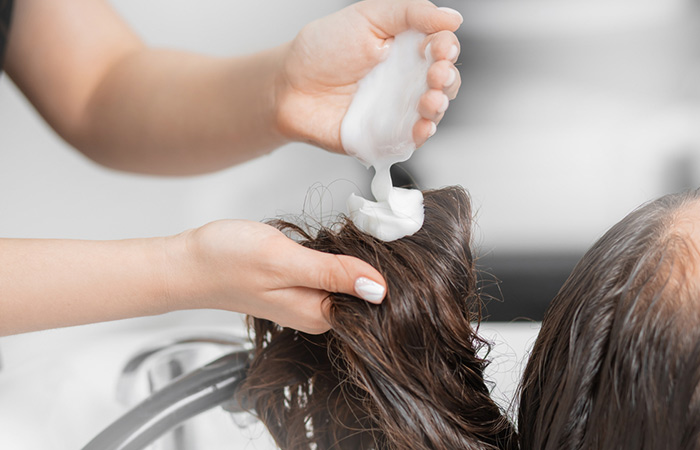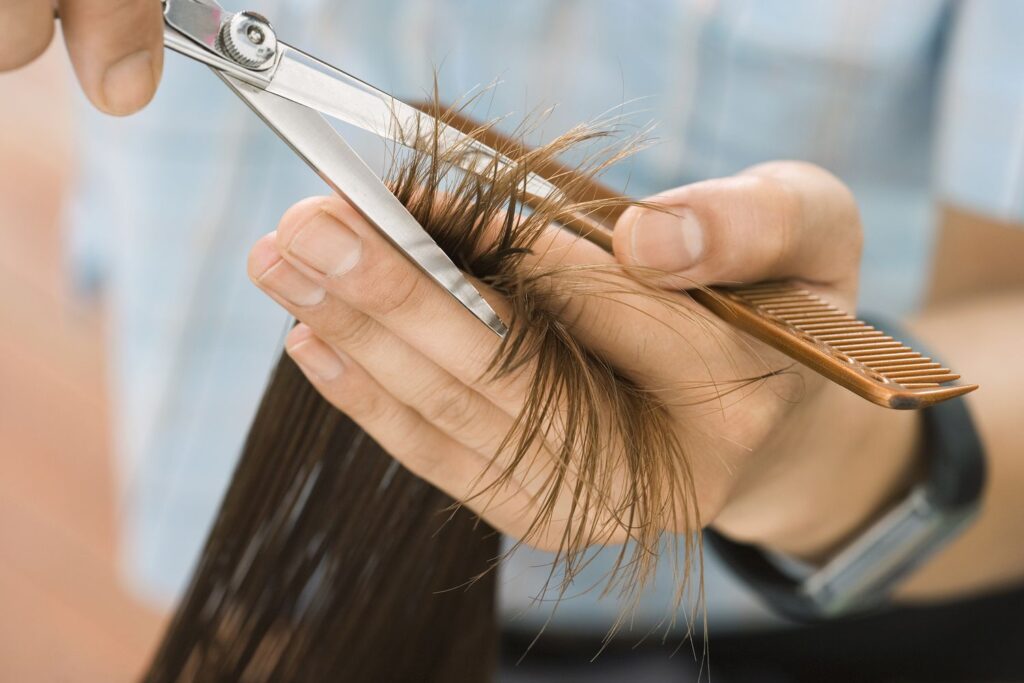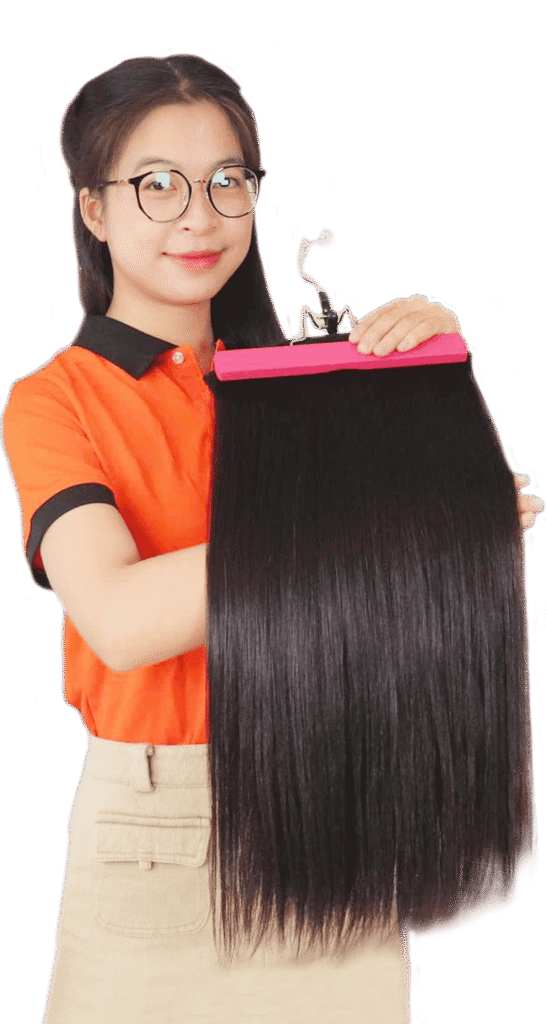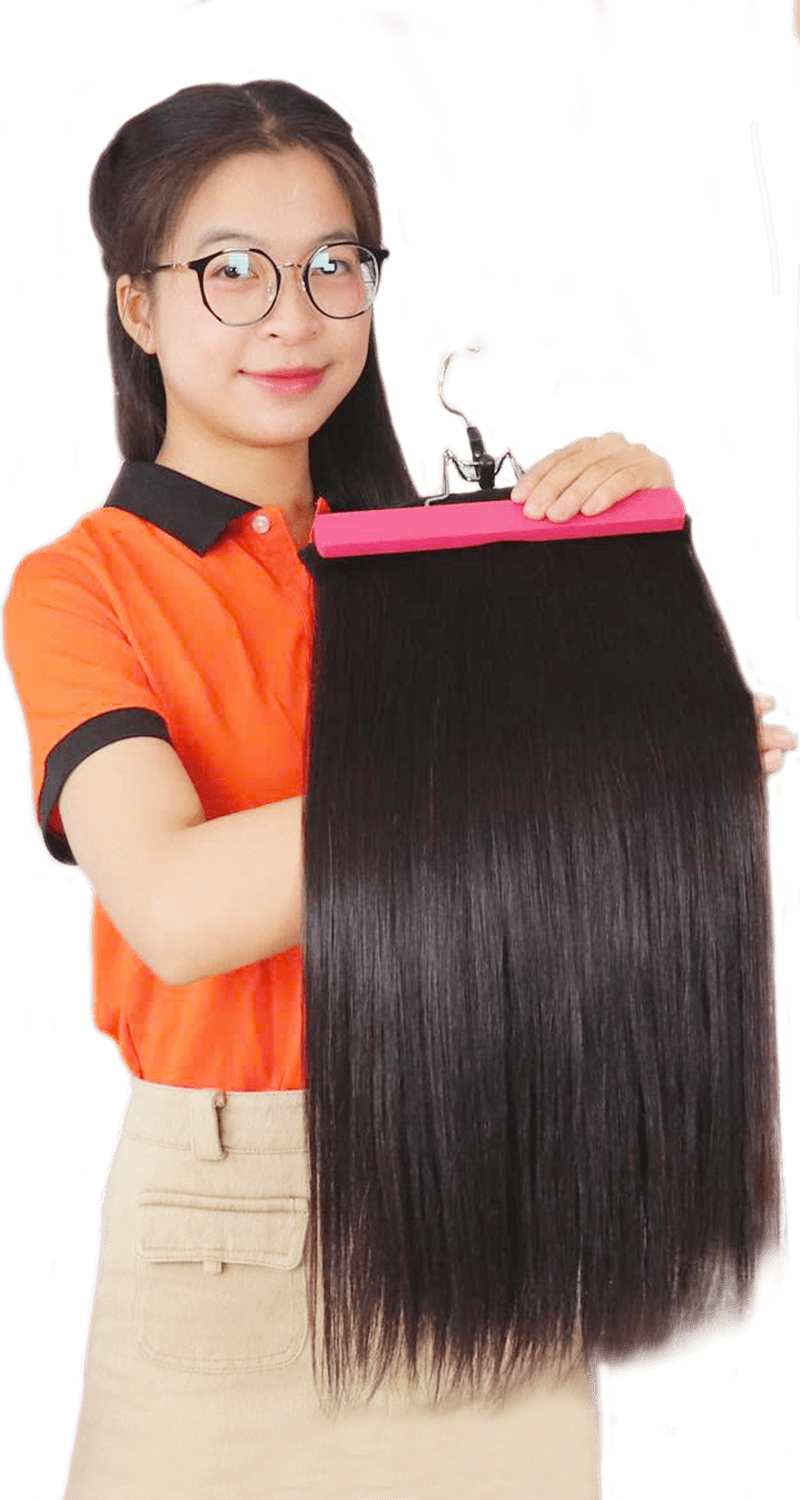For the past few years, effortless hair has ruled, from runways to the real world. Have you ever wondered why your hair doesn’t look like the shiny, bouncy hair you see in TV commercials? They have shiny and bouncy hair thanks to the power of editing magic? Not really. Editing magic only works if your hair is really healthy, luminous, and reflective. Even the best editor in the world also can not do anything if you have just matte, flat, and dull hair. Even though we don’t want bad things to come to our hair but a variety of elements from the weather to your hair care routine may be working against you and your hair health. Getting shiny hair doesn’t have to be difficult. Read on to learn how to bring your luster back to your dull hair!
I. What Is Dull Hair?

Each strand of your hair is covered with a cuticle layer, which is made of flattened cells that overlap like shingles on a roof. When the cuticle lays flat, the hair appears smooth and shiny. When the cuticle is raised, you lose that reflectivity, making your hair look lifeless and dull. Dull hair refers to hair that lacks moisture and natural shine. Dullness develops when the hair does not receive or retain enough moisture. The symptoms of dull hair include dryness, frizziness, and a rough texture.
II. What Causes Dull Hair?
You know dull hair when you see it: It may be limp, frizzy, flat, and, most notably, matte and dry instead of shiny, and feel heavy. Before trying treatments for dull hair, it is necessary to examine the reasons that cause it. A detailed approach to dull hair can help you choose the right solution.
- Product buildup: Over time, your hair and scalp may accumulate buildup and residue from shampoo and styling products. Eventually, that buildup can block natural hair oils from getting to the hair shaft – resulting in dull, dry hair.
- Hard water: The minerals in hard water, such as calcium and magnesium, are also a common source of buildup that can act as a barrier that moisture can’t penetrate.
- Sun damage: Prolonged exposure to the sun’s UV rays can damage the outer protective layer of your hair. As a result, sun-damaged hair can often become dry, brittle, and frizzy.
- Excessive heat styling: Heat tools, like blow dryers and curling irons, can damage the cuticle of your hair. Fine hair is especially susceptible to heat damage and can get easily burned.
- Improper hair care products or routine: This could include using too many hair products, using products with harsh, harmful ingredients, or using products that aren’t designed for your unique hair type.
- Infrequent brushing: Regularly brushing your hair helps keeps the cuticle sealed, and draws your natural oils from the scalp downward, which allows your hair to better reflect light. Failing to brush your hair can allow that cuticle to become rough and raised.
- Frequent dyeing or overprocessing with harsh chemicals: Whether you’re going lighter or darker, coloring your hair too often can decrease your natural shine.
- Pregnancy or other hormonal changes: You’ve probably heard that you’re supposed to enjoy thick, luscious hair during pregnancy – but hormones can affect every pregnant woman differently. Sometimes, hormone changes, as well as occasional nutritional deficiencies, can turn hair thin and limp.
III. How To Brighten Dull Hair?
Fortunately, there are ways to perk up dull-looking hair. By introducing some new techniques and home remedies and by using the right kinds of products, it’s possible to turn your lifeless locks into hair that’s healthier, glossier, and easier to style.
1. Clarify Your Hair With Baking Soda
Hair can become dull over time because it has buildup and residue on it from using products. When this happens, you can use a clarifying shampoo, or you can try a home treatment with baking soda. Essentially, it helps you get rid of product buildup, hard water residue, and any pollution that’s collected on your hair and scalp. Clarifying treatments can help unclog the hair follicles and ensure that your hair is getting the nutrients and natural oils it needs to shine and thrive.
How To Use:
- Add 2 to 4 tablespoons of baking soda to a cup or shallow bowl. (Use 2 tbsp. for shorter hair and 4 tbsp. for longer hair.) Mix in water until the baking soda turns into a paste.
- Massage the baking soda paste into your roots and scalp, then work toward the ends of your hair. Make sure to massage the paste into your hair shaft as you go.
- Use a wide-tooth comb to distribute the paste throughout your hair.
- Let the paste sit in your hair for about 5 minutes, then rinse your hair thoroughly and use your favorite conditioner.
2. Revive Dry Hair With Oil
If your hair is feeling dry, we suggested amping up the moisture in your conditioner by adding the penetrating power of a therapeutic oil, like coconut oil or Moroccan argan oil. We recommend you use Cococare 100% Coconut Oil or 100% Natural Moroccan Argan Oil, which you can buy online. Moroccanoil Treatment is another popular product that’s infused with argan and linseed oils to help nourish and strengthen hair.

How To Use:
- Mix the oil of your choice into your conditioner. How much oil you use depends on the texture of your hair. Try different amounts until you get the results you want.
- Apply the conditioner as you normally would.
- Leave it on a little longer than regular conditioner so it can soak in, then rinse your hair thoroughly.
*Note: To infuse extra moisture into your hair, you can try using the oil on its own instead of mixing it with your conditioner. This may be helpful if your hair is especially dry and frizzy. For a really deep conditioning treatment, we also recommended slathering the oil onto your dry hair before bed and you’ll be amazed at the results when you wash your hair in the morning.*
IV. How To Prevent Dull Hair?
1. Hair Conditioning

Hair experts recommend conditioning your hair after each wash. Conditioners can instantly smooth the cuticle, which is your hair’s outermost layer. It also protects the cortex, which is the innermost layer of your hair, naturally. Besides, conditioning can also protect your hair from tangles and breakage. It can restore your hair’s natural bounce with consistent application.
*Note: Avoid applying conditioner to your roots as it weighs your hair down while making it look dull and flat. Use conditioner only on the mid-lengths and ends of your hair.*
2. Hydration
If you have dull hair, hydrating it should be your top priority. Dry hair has a rough, dull surface that is prone to damage, whereas moisturized hair has smooth, shiny cuticles. To get visible results, use a pre-shampoo moisturizing treatment or a nourishing hair mask at least once a week to keep your hair and scalp hydrated.
3. Wash Your Hair Regularly
The most common reason for dull hair is improper rinsing of shampoo, which can also lead to product buildup. Dull hair is often dry. So, while it may not be a good idea to wash your hair daily, as a general rule, most experts recommend washing your hair every 2-3 days. Use a mild clarifying shampoo to eliminate dirt and product buildup without stripping your hair of its natural oils. Experts recommend rinsing your hair until the water runs clear and is free of soap bubbles.
Read Now: How Often Should You Wash Your Hair?
4. Choosing The Right Products
It is critical to adjust your hair care routine and products to your specific hair type. While the right shampoo and conditioner can work wonders for your hair, the wrong ones can cause serious damage. When selecting hair care products, keep your hair type and texture in mind. It’s also a good idea to avoid products that contain harmful chemicals, sulfates, and parabens.
5. Take Care Of Hair Ends

Uneven and messy ends can make your hair look dull, even after you’ve properly washed and conditioned it. Trimming your hair every 8-12 weeks can help prevent split ends. Don’t forget to use a heat protection spray or serum on your hair before blow-drying or heat styling.
6. Towel Drying

Wet hair is more prone to damage. Roughly rubbing your hair with a towel can significantly weaken your hair and lead to split ends, breakage, and hair fall. To towel dry your hair correctly, squeeze out any excess water from your hair, then gently blot small sections with a soft, microfiber towel.


 BEST SELLING PRODUCTS
BEST SELLING PRODUCTS Wig Hair
Wig Hair WHOLESALE
WHOLESALE Contact us
Contact us Sale Events
Sale Events
